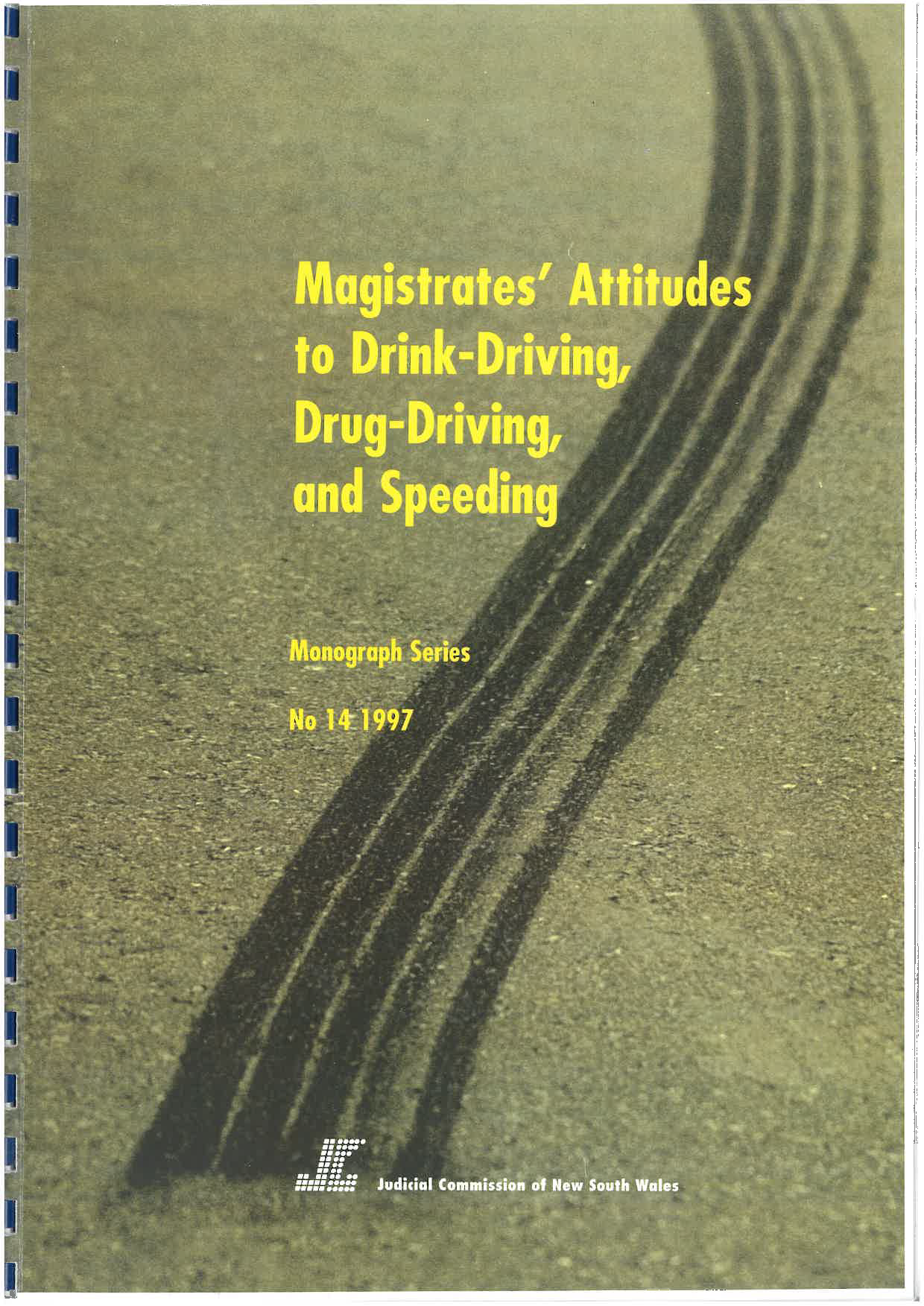
Paperback, 67 pp, 1997, ISBN 0 7313 0264 8
“The nation’s traffic legislation has become enshrined in long and detailed statutory provisions. The law imposes penalties for motorists who fail to adhere to the standard of driving required to keep the roads safe. Many motorists transgress these laws. Of the scores of possible offences which the citizen may commit today the traffic offence is by far the most common kind of offence. Few motorists achieve a life-time record of unblemished driving …”1
Middle and high range prescribed concentration of alcohol (PCA) offences are the two most common offences dealt with in the Local Courts. Low range PCA offences also fall among the “top twenty” offences in that jurisdiction. In association with other traffic offences, such as speeding, these matters comprise a significant component of the daily work of magistrates.
In January 1996, the Road Safety and Traffic Management Branch of the Roads and Traffic Authority of New South Wales (the Authority) approached the Judicial Commission of New South Wales (the Commission) with a view to conducting interviews with a number of magistrates in order to gain an insight into their attitudes to road safety issues such as drink-driving, drug-driving and speeding. Particular issues such as the effectiveness of formal sanctions and the increased likelihood of punishment for drink-drivers through random breath testing were also to be canvassed.
The Authority is responsible for providing the public with information about road safety issues. It has a specific objective of reducing the number of road crashes in which alcohol is a factor. Crash data, community survey data and drink-driving detection rates are collected for evaluation. As part of its strategic approach to road safety, the Authority is interested in supporting the work of magistrates and understanding the way in which penalties are imposed.
The main objectives of this project were to:
- improve the Authority’s understanding of the factors influendng the sentendng process; .
- identify a possible educational need for material to enhance magistrates’ knowledge and understanding of traffic issues;
- develop and promote appropriate educational material to meet that need; and
- disseminate to all magistrates and other judicial officers an analysis of the views of a representative sample of their colleagues on these issues.
The Commission has a statutory mandate to monitor sentences imposed by courts and disseminate information about those sentencing patterns. Given the significance of traffic offences in the daily work of magistrates across the State, the Commission was keen to participate in this project, particularly in light of the potential benefits to judicial officers. An additional impetus for this project comes from concerns raised in the media about the consistency and appropriateness of penalties for drink-driving offenders.
It was decided that the most effective way to gain an appreciation of the issues involved in sentencing traffic offenders was to conduct a series of semi-structured face-to-face interviews with a wide cross-section of magistrates. The interviews were designed to elicit information about:
- the way in which magistrates deal with such offenders;
- the type of information regarding random breath testing that may be of assistance to magistrates; and
- magistrates’ views about some of the more controversial diversionary options such as the traffic offender programme and the use of s 556A dismissals and recognizances.
The study focused on drink-driving, being the main road safety issue dealt with by magistrates, and also addressed some issues in drug-driving and speeding. Due to the Authority’s interest in understanding more about the use of the provisions of s 556A of the Crimes Act 1900 (NSW) in the context of drink-driving, a number of quite detailed questions were asked in the survey about this aspect of sentencing.
This monograph examines some of the more general issues involved in the sentencing of traffic offenders, analyses the results of interviews with a number of magistrates concerning their views both on sentencing traffic offenders and road safety issues generally, and presents some detailed factual material about drink-driving, drug-driving and speeding. The report also suggests some possible directions for the future.
- Douglas Brown, Traffic Offences, 2nd ed, 1988, Butterworths, Sydney Preface, p xii.










